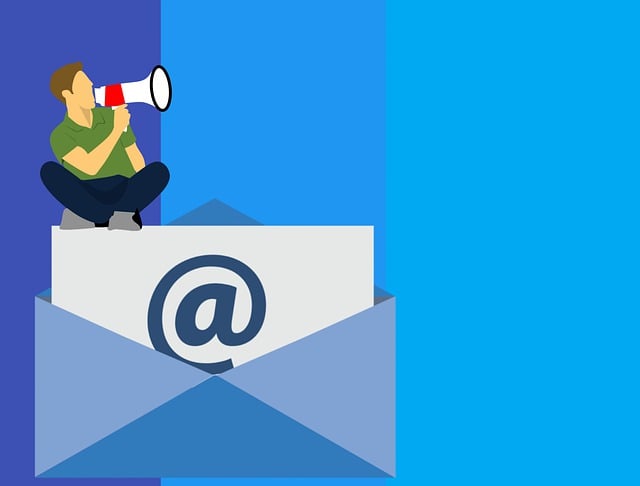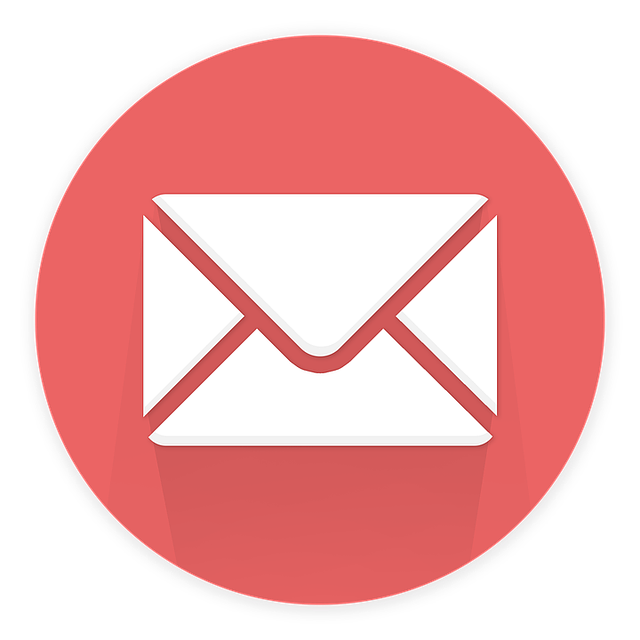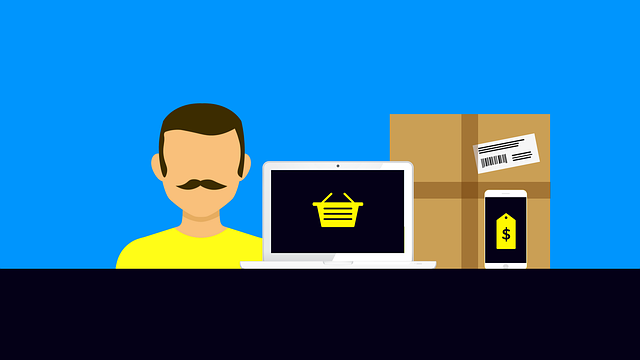Are you ready to skyrocket your fashion or beauty startup to success? Look no further than email marketing. With its unparalleled ability to connect with your target audience and drive sales, email marketing is the secret weapon that every startup needs in their arsenal. In this article, we will uncover the five essential strategies that will take your email marketing game to the next level.
But first, picture this: you’re a fashion or beauty entrepreneur with big dreams and even bigger potential. You’re ready to make an impact in the industry and captivate your customers with your unique products. Now imagine having a direct line to your customers’ inboxes, where you can showcase your latest collections, offer exclusive promotions, and build meaningful relationships. That’s the power of email marketing.
In this article, we’ll show you how to:
- Build a strong subscriber list
- Create engaging content
- Develop a consistent email schedule
- Implement effective calls to action
- Analyze and optimize your email campaign performance
Get ready to revolutionize your fashion or beauty startup with these game-changing email marketing strategies. Let’s dive in!
Key Takeaways
- Building a strong subscriber list is crucial for fashion and beauty startups, and can be achieved through offering exclusive deals and personalized content, as well as promoting the email newsletter on websites and social media.
- Creating engaging content is essential for email marketing success, and can be done through visual storytelling with high-quality images, videos, and graphics, as well as compelling subject lines.
- Developing a consistent email schedule helps build trust and credibility, and should involve planning in advance for regular updates, considering frequency and timing.
- Implementing effective calls to action is important, and can be achieved through compelling subject lines, visually appealing email templates, persuasive language, and highlighting unique selling points.
Building a Strong Subscriber List
You can start building a strong subscriber list by enticing potential customers with exclusive deals and personalized content that will make them feel like they’ve just stepped into a luxurious boutique.
Targeted segmentation is key to ensuring that your emails reach the right audience. By understanding the needs and preferences of your target market, you can tailor your emails to provide relevant and valuable information.
Implement email list growth strategies such as offering incentives for signing up, like discounts or freebies. Make sure to promote your email newsletter on your website and social media channels to maximize visibility.
Remember, the goal is to create a sense of exclusivity and make your subscribers feel special. By focusing on building a strong subscriber list, you can then transition into creating engaging content that will keep your audience hooked.
Creating Engaging Content
Immerse yourself in a captivating world of irresistible narratives and visually-arresting imagery to craft content that resonates deeply with your target audience.
Visual storytelling is key in the fashion and beauty industry, as it allows you to showcase your products in a way that evokes emotions and captures attention. Use high-quality images, videos, and graphics to tell a story that speaks to your audience’s desires and aspirations.
In addition to visual storytelling, creating compelling subject lines is crucial to grab your subscribers’ attention and entice them to open your emails. Your subject lines should be concise, intriguing, and promise value. Consider using personalization techniques or posing a question to pique curiosity and encourage engagement.
By combining captivating visuals and compelling subject lines, you can create engaging content that not only captures your audience’s attention but also drives them to take action. Whether it’s making a purchase, signing up for a newsletter, or sharing your content, your goal is to create a sense of urgency and excitement.
As you develop your email marketing strategy, keep in mind the importance of developing a consistent email schedule. Transitioning into the next section, a consistent schedule ensures that your audience receives regular updates and remains engaged with your brand.
Developing a Consistent Email Schedule
Establishing a regular cadence for your email communications allows you to cultivate a sense of reliability and consistency, ensuring that your audience eagerly anticipates each update and stays connected with your brand.
Consistency in branding, scheduling, and tone is key to maintaining a strong email list and keeping your subscribers engaged. By sending emails on a consistent basis, you create a habit for your audience, making them more likely to open and engage with your emails. It also helps to establish trust and credibility with your subscribers, as they come to rely on your emails for valuable content.
Make sure to plan your email schedule in advance, taking into consideration the frequency and timing that works best for your audience. By developing a consistent email schedule, you will build a loyal following that eagerly awaits your updates and stays connected with your brand.
This lays the foundation for implementing effective calls to action, which we will discuss in the next section.
Implementing Effective Calls to Action
Implementing impactful prompts can provoke a powerful response from your audience, driving them to take action and engage with your brand. To effectively encourage your audience to take the desired action, it is crucial to craft compelling subject lines that pique their curiosity and create a sense of urgency. A well-crafted subject line can entice recipients to open your emails and explore the content inside. Additionally, designing eye-catching email templates with visually appealing graphics and a clear call to action can further enhance audience engagement. Use persuasive language and compelling arguments to highlight the unique selling points of your fashion or beauty startup, and tailor the content to resonate with your target audience. By implementing these strategies, you can create email campaigns that captivate your audience and drive them to take action. Now, let’s move on to analyzing and optimizing email campaign performance.
Analyzing and Optimizing Email Campaign Performance
To optimize the performance of your email campaigns, it is crucial to track key metrics like open rates and click-through rates. By analyzing these metrics, you can identify what is resonating with your audience and make adjustments to improve engagement.
A/B testing different elements of your emails, such as subject lines or call-to-action buttons, allows you to experiment and find the most effective strategies.
Additionally, using analytics to identify opportunities for improvement enables you to make data-driven decisions and continuously enhance the success of your email marketing efforts.
Tracking Key Metrics like Open Rates and Click-Through Rates
Maximize the effectiveness of your email campaigns by closely monitoring key metrics such as open rates and click-through rates. These metrics give you valuable insights into how engaged your audience is with your fashion and beauty startup’s content. By tracking these metrics, you can gauge the success of your email marketing efforts and make data-driven decisions to optimize your campaigns.
Email segmentation allows you to divide your audience into specific groups based on demographics, preferences, or behavior. This ensures that you deliver targeted and relevant content.
Additionally, email automation streamlines your processes. It allows you to send personalized emails at the right time and frequency. By incorporating these strategies, you can increase open rates and click-through rates, ultimately driving more conversions for your fashion and beauty startup.
To further enhance your email campaigns, it’s important to A/B test different elements of your emails. This includes subject lines, calls to action, and visuals. A/B testing helps you continuously improve your results.
A/B Testing Different Elements of Your Emails
Now that you understand the importance of tracking key metrics like open rates and click-through rates, it’s time to take your email marketing strategy to the next level with A/B testing.
A/B testing involves creating different versions of your emails and sending them to a small sample of your audience to see which version performs better. By testing different elements such as subject lines, call-to-action buttons, and email layouts, you can optimize your conversion rates and improve the overall effectiveness of your email campaigns.
A/B testing allows you to make data-driven decisions and continuously refine your email marketing strategy based on real-time results. So, don’t be afraid to experiment and learn from your A/B testing results to maximize the impact of your email marketing efforts.
Next, we’ll explore how you can use analytics to identify opportunities for improvement and further enhance your email marketing strategy.
Using Analytics to Identify Opportunities for Improvement
Unleash the power of data-driven insights and uncover hidden gems within your email analytics to unlock the full potential of your campaign. By utilizing email automation and opportunities for segmentation, you can take your email marketing to the next level.
Analyzing your email analytics allows you to identify areas for improvement and optimize your campaigns for better results. Dive into the data and discover which subject lines, content, and calls to action resonate most with your audience. Use this valuable information to refine your email strategy and create more personalized and targeted campaigns.
By understanding your audience’s preferences and behavior, you can deliver the right message to the right people at the right time, increasing engagement and conversions. So, with a solid understanding of your analytics, you can now move on to nurturing customer relationships and loyalty.
Nurturing Customer Relationships and Loyalty
When it comes to nurturing customer relationships and building loyalty, there are three key strategies that can make a big impact:
-
Sending personalized thank-you and birthday emails. Personalized emails show your customers that you value and appreciate their support.
-
Offering exclusive promotions and discounts. Exclusive promotions and discounts make customers feel like insiders.
-
Collecting and utilizing customer feedback for improvement. By actively listening to their feedback and making improvements based on their suggestions, you can show your customers that their opinions matter and create a stronger bond with them.
Sending Personalized Thank-You and Birthday Emails
Make your customers feel special by sending them personalized thank-you and birthday emails. This simple gesture goes a long way in establishing a deeper connection with your customers and showing genuine appreciation for their support.
By personalizing your emails, you can make your customers feel valued and understood. One effective strategy is to include personalized product recommendations based on their previous purchases or browsing history. This not only showcases your knowledge of their preferences but also increases the chances of making a sale.
Another important tactic is segmenting your email lists to ensure that each customer receives content that is relevant to their interests and needs. This level of customization can significantly improve engagement and conversion rates.
Moving forward, offering exclusive promotions and discounts will further incentivize your customers to continue their relationship with your brand.
Offering Exclusive Promotions and Discounts
Sending personalized thank-you and birthday emails is a great way to build customer loyalty and show appreciation. But to truly engage your audience and drive sales, you need to offer them something special. That’s where offering exclusive promotions and discounts comes in.
By creating loyalty programs and collaborating with influencers, you can provide your customers with unique benefits and experiences that they won’t find anywhere else.
So, what are the advantages of offering exclusive promotions and discounts?
-
Increased customer retention: By rewarding your loyal customers with exclusive deals, you encourage them to keep coming back for more.
-
Enhanced brand perception: Collaborating with influencers can help you reach a wider audience and build credibility for your brand.
-
Higher conversion rates: Exclusive promotions and discounts create a sense of urgency and FOMO, driving customers to make a purchase.
Next, we’ll explore how collecting and utilizing customer feedback can further improve your email marketing strategy.
Collecting and Utilizing Customer Feedback for Improvement
Gathering and leveraging customer feedback is crucial for refining and optimizing your email campaign. It allows you to gain valuable insights and make informed decisions to enhance your overall strategy.
By actively seeking feedback from your customers, you can gauge their satisfaction and identify areas for improvement. Analyzing their feedback gives you a deeper understanding of their preferences and needs, helping you tailor your email content to better resonate with them. This not only increases customer satisfaction but also strengthens your relationship with them.
Additionally, customer feedback analysis can uncover trends and patterns that can guide future product development and marketing efforts. By listening to your customers and incorporating their feedback, you show them that their opinions matter, and you are committed to continuously improving their experience.
Frequently Asked Questions
How can I ensure that my subscriber list is targeted and consists of potential customers for my fashion and beauty startup?
To ensure that your subscriber list is targeted and consists of potential customers for your fashion and beauty startup, subscriber segmentation and email list building are key.
By dividing your subscribers into specific groups based on their demographics, preferences, and behaviors, you can send tailored emails that resonate with their interests. This targeted approach increases the likelihood of conversion and drives higher engagement.
Building a quality list through opt-ins and lead generation tactics further ensures that your subscribers are genuinely interested in your products or services.
What are some creative ways to make my email content more engaging and visually appealing?
To make your email content more engaging and visually appealing, you can implement design tips for email newsletters.
Use eye-catching visuals, such as high-quality images and videos, to capture your readers’ attention.
Incorporate interactive elements like quizzes, polls, or GIFs to encourage user engagement.
Keep your content concise and to the point, with clear calls to action.
Tailor your language and tone to resonate with your audience, making the content relatable and compelling.
Is it necessary to send emails at the same time and day every week, or can I vary the schedule based on my audience’s preferences?
When it comes to email frequency and timing, it’s important to consider your audience’s preferences.
While sending emails at the same time and day every week can provide consistency, varying the schedule based on your audience’s preferences can be more effective. By doing so, you can ensure that your emails reach them when they’re most likely to engage with them.
Pay attention to open rates and click-through rates to determine the optimal timing for your emails.
Ultimately, it’s about delivering value to your audience at the right time.
How can I make my calls to action more effective in driving conversions and sales?
To make your calls to action more effective in driving conversions and sales, focus on optimizing subject lines and utilizing personalization techniques. Craft compelling subject lines that grab your audience’s attention and entice them to open your emails.
Personalize your calls to action by addressing the recipient by name and tailoring the content to their interests and preferences. By doing so, you’ll create a sense of relevance and urgency, increasing the likelihood of conversions and sales.
What are some key metrics I should be tracking to measure the success of my email marketing campaigns, and how can I optimize them for better performance?
To measure the success of your email marketing campaigns, tracking metrics is crucial.
Key metrics to focus on include open rates, click-through rates, conversion rates, and unsubscribe rates. By analyzing these metrics, you can identify areas for improvement and optimize your campaigns for better performance.
To achieve higher open and click-through rates, consider crafting compelling subject lines and CTAs. Additionally, personalization and segmentation can enhance conversion rates.
Don’t forget to regularly monitor and adjust your campaigns based on these metrics to ensure ongoing success.
Conclusion
In conclusion, implementing effective email marketing strategies is crucial for the success of fashion and beauty startups.
By building a strong subscriber list, creating engaging content, developing a consistent email schedule, implementing effective calls to action, and analyzing and optimizing campaign performance, startups can maximize their reach and increase customer engagement.
For example, a hypothetical case study could be a fashion startup that saw a 20% increase in sales after implementing personalized email campaigns that showcased their latest collections and offered exclusive discounts to their subscribers.
By focusing on the needs and preferences of their target audience, startups can nurture customer relationships and foster loyalty, ultimately driving growth and success.









